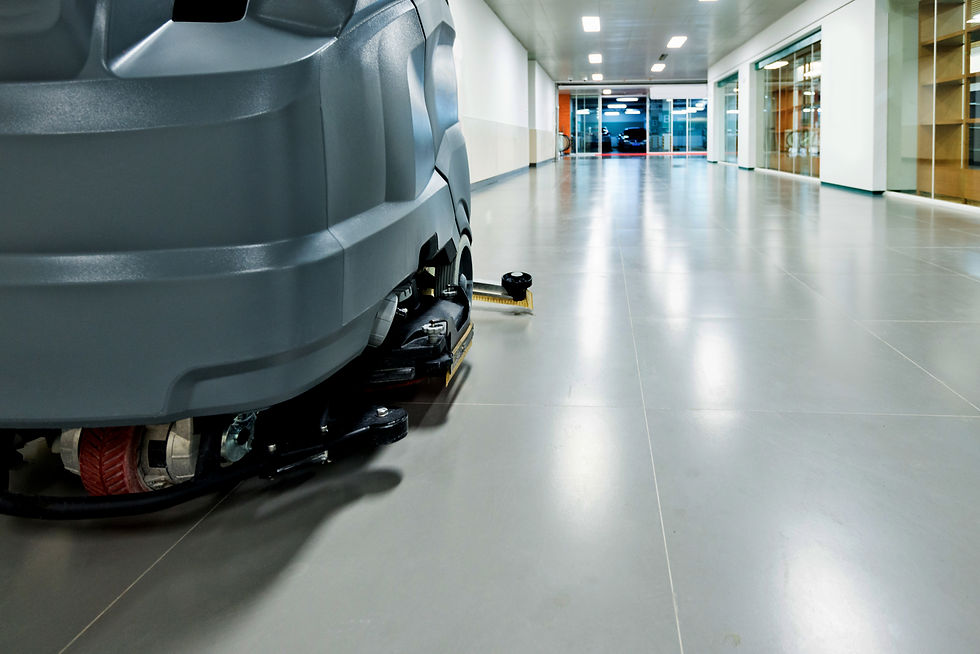Green Glossary: Definitions of Common Terms in the Field of Green Cleaning
- First Image
- Apr 30, 2020
- 5 min read
Updated: May 1, 2020

Antimicrobial agents
A general term for drugs, chemicals, or other substances that either kill or slow the growth of microbes. In most green cleaning situations, a particular chemical called triclosan is to be avoided. Triclosan, used for its antibacterial properties, is an ingredient in many detergents, dish-washing liquids, and soaps, and an additive in various plastics and textiles. However, the safety of triclosan has been questioned. While the companies that manufacture products containing this chemical claim that it is safe, the United States Environmental Protection Agency (EPA) has registered it as a pesticide. The EPA gives triclosan high scores both as a human health risk and as an environmental risk.
Employing a strong antibiotic agent such as triclosan for everyday use is of questionable value, as it takes a shotgun approach to killing all microscopic organisms while also destroying the beneficial bacteria in the environment and in our bodies. These friendly bacteria cause no harm, and often produce beneficial effects, such as aiding metabolism and inhibiting the invasion of the harmful pathogens.
Cross-contamination
The spreading of bacteria among people, food, surfaces, and/or equipment. Proper cleaning processes can prevent this.
Daylighting
Daylighting uses natural light to illuminate buildings. Rather than relying on banks of fluorescent lights, daylighting brings indirect sunlight deep into a building, connecting people to the rhythms of nature while providing pleasing illumination at a fraction of the cost of even the most efficient electric lights.
EPA
The U.S. Environmental Protection Agency. Its mission is to protect human health and the environment.
Green cleaning
Cleaning to protect health without harming the environment
Green label
The Carpet and Rug Institute's certification program for vacuum cleaners. To qualify for the Green Label, vacuums must go through a stringent testing process that measures three key performance factors:
Soil Removal - The vacuum must remove a set quantity of soil from carpet in four passes.
Dust Containment - The vacuum must not release more than 100 micrograms of dust particles per cubic meter of air. This protocol evaluates the total amount of dust particles released by the brush rolls, through the filtration bag and via any air leaks from the system, and is more stringent than the National Ambient Air Quality Standards.
Carpet Appearance Retention - The vacuum should not affect the appearance of the carpet more than a one-step change based on one year of normal vacuum use.
High performance vacuum cleaners have a significant impact on improved indoor air quality (IAQ). At the same time, vacuums that effectively remove and contain soil while keeping the carpet looking good will help carpets last longer. Ultimately, better performing vacuums provide a greater return on investment and ensure a healthier indoor environment. Green Seal
A widely recognized green product certification. The Green Seal organization is "an independent, non-profit organization that strives to achieve a healthier and cleaner environment by identifying and promoting products and services that cause a less toxic pollution and waste, conserve resources and habitats, and minimize global warming and ozone depletion. Green Seal has no financial interest in the products that it certifies or recommends nor in any manufacturer or company."
Green Seal Certified Products
The Green Seal is awarded to products that have less impact on the environment and work well. To earn the Green Seal a product must meet the Green Seal environmental standard for the category as demonstrated by rigorous evaluation, testing and a plant visit.
Green Seal Recommended Products
Green Seal publishes reports of product recommendations to provide guidance for institutional purchasers. The recommendations are based on a careful environmental screening of available information on products currently on the market. The recommended products appear to meet the prerequisites for being environmentally responsible based on data provided by their manufacturers. Recommended products have not gone through Green Seal's formal certification process.
Greenhouse Gas Emissions
Greenhouse gasses are primarily carbon dioxide, methane, and nitrous oxide, which are naturally occurring. However, through population growth, fossil fuel burning, and deforestation, people and businesses are affecting the mixture of gases in the atmosphere. Plus, a variety of industrial processes now emit very powerful greenhouse gases that are not naturally occurring -- these include hydrofluorocarbons (HFCs), perfluorocarbons (PFCs), and sulfur hexafluoride (SF6). According to the EPA, the heat-trapping property of greenhouse gases is undisputed although uncertainties exist about exactly how the earth's climate responds to them. There is new and stronger evidence that most of the global warming over the last 50 years is attributable to human activities.
HEPA
High Efficiency Particulate Air (HEPA) filters used in HVAC systems, vacuum cleaners, etc. A HEPA filter removes a minimum of 99.97% of contaminants at 0.3 microns in size. In comparison, a human hair is about 60-75 microns in diameter. Particles less than 35 microns can't be seen with the naked eye. Pollen is in the 10-100 micron range, with dust in the .5-5 micron range. Particles under 5 microns can to penetrate deep into the lungs.
IAQ
Indoor Air Quality. An important environmental consideration, because people spend approximately 90 percent of our time indoors. Common factors that affect IAQ are:
People (exhalation, body odors, diseases)
Activities (work such as cleaning, using correction fluids, carbonless paper, pest control products, and personal activities such as wearing fragrances and smoking)
Technology (photocopiers and laser printers)
Furnishings (furniture, draperies, floor coverings)
Finishes (paint, varnish, vinyl wall coverings)
Building materials (caulking compounds, adhesives, wood laminates)
Outdoor air quality
Inadequate or contaminated air handling units
Inadequate cleaning practices




Comments